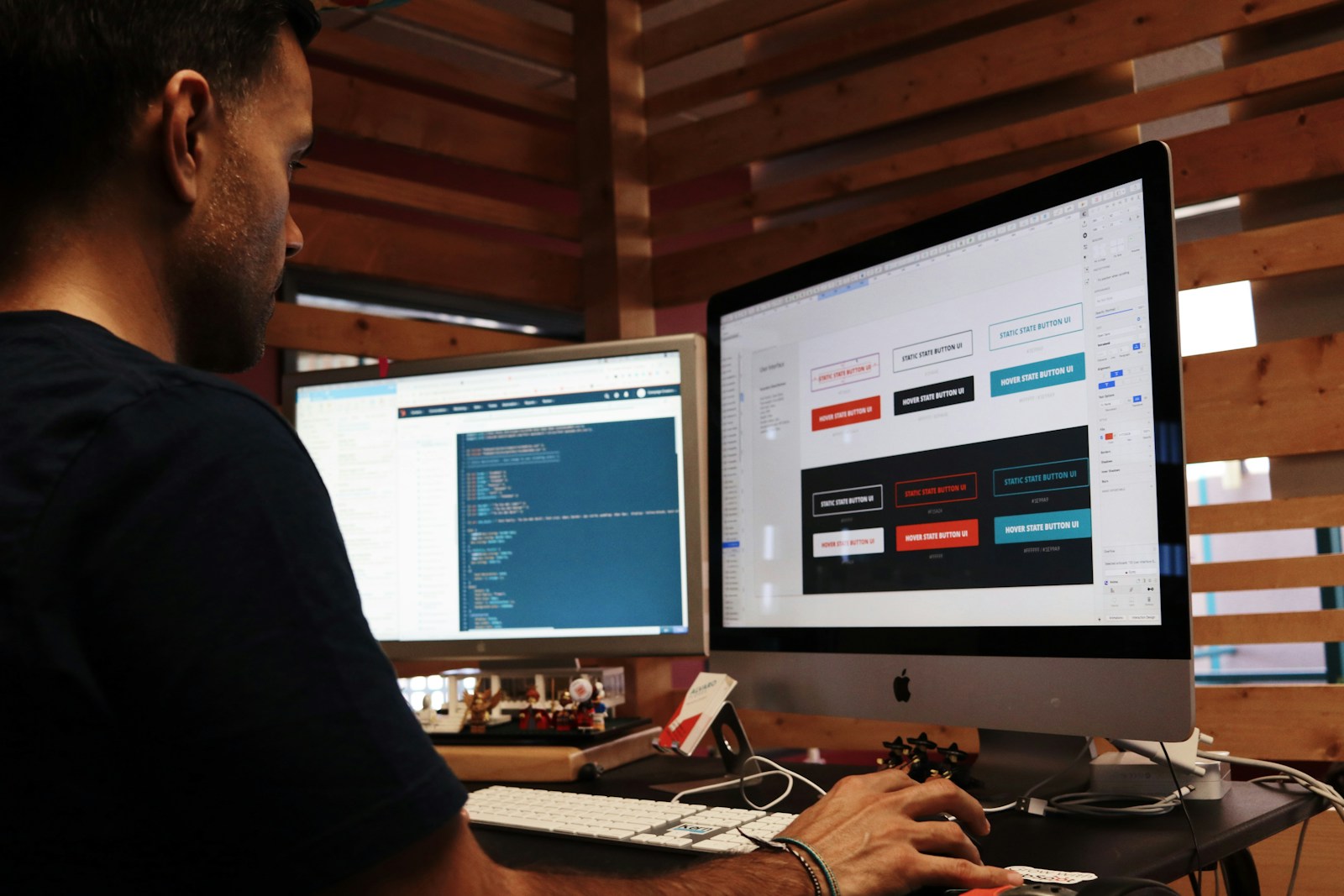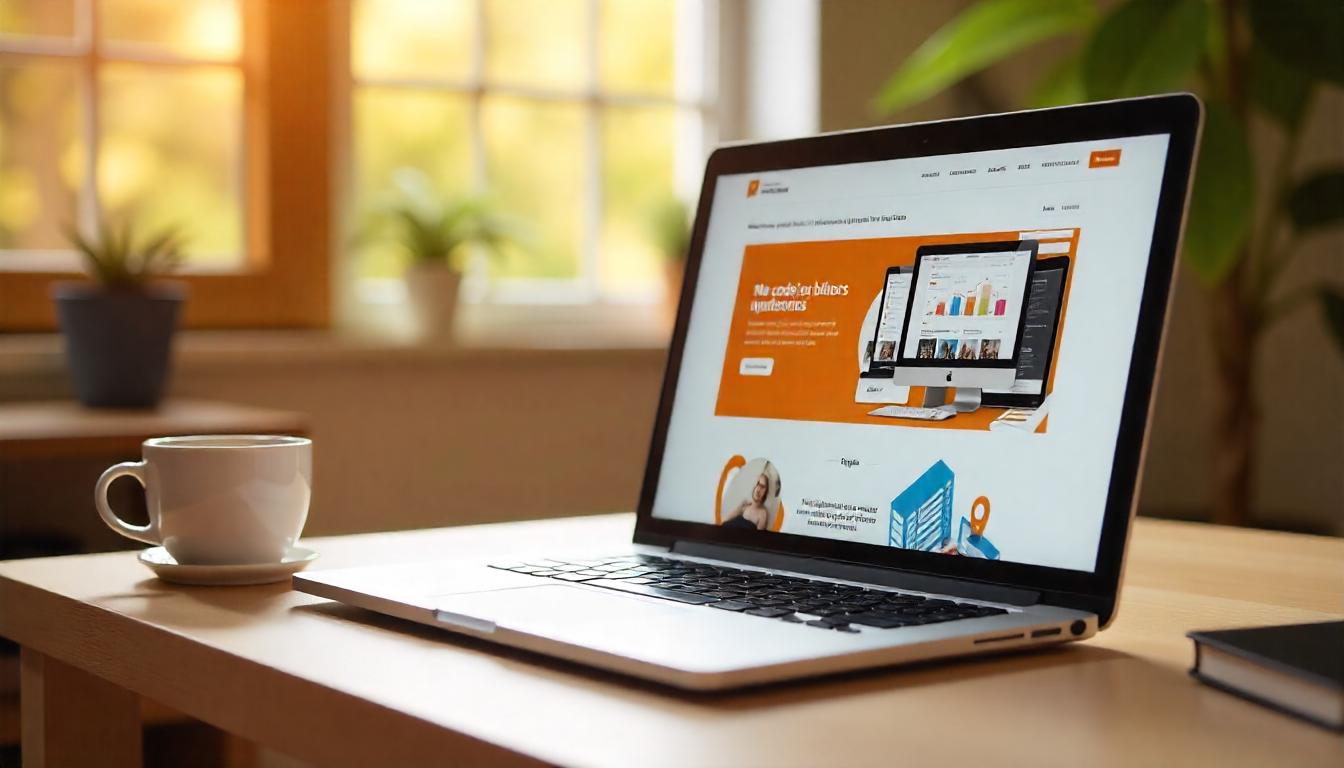The digital landscape is ever-evolving, and staying on top of web design trends is crucial for creating engaging and effective online experiences. As a web design enthusiast, I’m constantly exploring new ideas and approaches. This year, a few trends have particularly caught my eye – not just for their aesthetic appeal, but for their ability to enhance usability, accessibility, and overall user satisfaction.
Remember when dark mode felt like a trendy novelty? A fleeting design fad destined to fade away with the rise of the next big thing? Well, fast forward to 2025, and not only is dark mode still very much here, but I’ve found myself more captivated than ever by the new directions web design is taking. As someone who has spent over a decade building digital experiences, I can’t help but geek out over how deeply creative, user-focused, and just downright cool today’s trends are becoming.
So in this blog post, I want to personally walk you through five web design trends I’m completely obsessed with this year—and trust me, these aren’t just eye candy. They’re transforming how we interact with the web.
Key Takeaways
- Web design in 2025 is shifting toward playful expression, interactivity, and inclusivity.
- Trends like retro-futurism and mixed media storytelling are helping brands break through digital sameness.
- Accessibility is no longer optional—it’s integral to good design.
- Typography and micro-interactions are proving that the smallest changes make the biggest impact.
- These trends, when implemented thoughtfully, can elevate a website’s overall user experience and brand identity.
The Rise of Retro-Futurism and Y2K Aesthetics
If you’d told me five years ago that I’d be designing websites with pixelated graphics, neon gradients, and nods to Windows 98-style interfaces, I might’ve laughed it off. Yet here we are, and I’m genuinely loving every bit of it. Retro-futurism and Y2K aesthetics are roaring back—but this time, they’re smarter, sharper, and far more intentional.
From sparkly cursors and holographic textures to glitch effects and heavy drop shadows, these elements tap into a collective nostalgia while still pushing the envelope. They’re not just mimicking the past—they’re remixing it into something futuristic and undeniably fun.
Why I’m obsessed: This trend gives me permission to break the grid, play with bold visuals, and tell stories that feel personal. In a sea of clean, minimal websites, these throwback vibes immediately grab attention and inject personality into any brand.
“Design isn’t just about looking good—it’s about making people feel something. And this trend nails that emotional connection.”
Micro-Interactions and Subtle Animations That Delight
Ever hovered over a button and felt a tiny bounce that made you smile? Or noticed a shimmering glow that guided your eyes exactly where they needed to go? That’s the power of micro-interactions, and in 2025, they’re getting more precise, purposeful, and downright addictive.
Micro-interactions help users understand what’s happening, where to go next, and whether their actions are being registered—all without a single word of text. But beyond that, they add a level of finesse that turns a good UI into a great one.
For me, designing these small touches feels like leaving breadcrumbs for the user—little moments of magic that make the experience smoother and more memorable.
Why I’m obsessed: These animations create an emotional rhythm as users interact with a site. They breathe life into otherwise static elements, and when done right, they don’t just decorate—they communicate.
Bold Typography as a Primary Design Element
As a digital designer and storyteller, I’ve always known that type carries weight—literally and metaphorically. But this year, typography isn’t just carrying the message; it is the message.
Oversized fonts, kinetic text animations, expressive letterforms—typography is stepping into the spotlight and owning its space. It’s no longer about playing a supporting role to images and graphics. Now, it’s leading the visual conversation.
I find myself experimenting more with variable fonts that shift fluidly across screen sizes, using dynamic type to convey mood, movement, and hierarchy. It’s like sculpting with language.
Why I’m obsessed: Bold typography allows me to establish a brand’s voice with just a few words. When used right, it becomes visual poetry—grabbing attention while elevating the entire layout.
Accessible and Inclusive Design at the Forefront
Let’s be honest: accessibility hasn’t always been prioritized in the design world. For years, it was seen as a checklist item—something you’d tack on after the “real” design was done. But thankfully, that mindset is changing.
Today, designing with accessibility in mind is not just about compliance—it’s about empathy. From high contrast text and screen reader support to intuitive navigation and motion sensitivity settings, accessibility is helping us create experiences that work for everyone.
As Amar Karthik, a digital creator who believes in the power of meaningful experiences, I feel a deep responsibility to ensure my work is usable by all people, regardless of ability.
Why I’m obsessed: Accessibility forces me to think deeper about what design really is. It’s not about flashy visuals—it’s about creating solutions that are usable, meaningful, and welcoming.
“Great design isn’t just for the few—it’s for the many. Accessibility turns websites into inclusive spaces where everyone can belong.”
Immersive Storytelling Through Mixed Media
We live in an age where attention spans are short and competition is fierce. That’s why immersive storytelling through mixed media has become one of my favorite trends this year.
Think of a website as a living story: videos that autoplay as you scroll, ambient sounds that set the mood, interactive 3D models that invite touch. These aren’t just gimmicks—they’re immersive layers that captivate and convert.
I’m particularly drawn to how mixed media allows me to choreograph an experience—guiding the user through a journey that unfolds seamlessly. It’s less about static content and more about designing moments that resonate.
Why I’m obsessed: This trend lets me blend creativity and strategy. I can tell powerful brand stories while giving users something they’ll actually remember.
Why These Trends Matter for the Future of Web Design
These trends signal more than just style shifts. They represent a broader movement toward more human-centered web design—design that connects, resonates, and includes.
They challenge me to think not just like a designer, but like a user. To go beyond pixels and code and focus on impact. To find new ways to make the web more creative, more inclusive, and more alive.
“In the end, it’s not about chasing trends—it’s about choosing the ones that bring your design closer to the people it’s meant to serve.”
Final Thoughts from me
If there’s one thing I’ve learned in my journey, it’s that great design is always evolving—and so am I. The trends I’ve shared here aren’t just passing fads. They’re signals of where we’re headed as creators, as brands, and as users.
As Amar Karthik, I’m committed to staying curious, embracing change, and building digital experiences that matter. Whether you’re a fellow designer, a startup founder, or just someone passionate about web experiences, I hope these insights inspire you to look at your own design work with fresh eyes.
Let’s keep pushing boundaries—because the web isn’t finished, and neither are we.
Until next time, stay curious. Stay creative. And never stop designing with heart.





